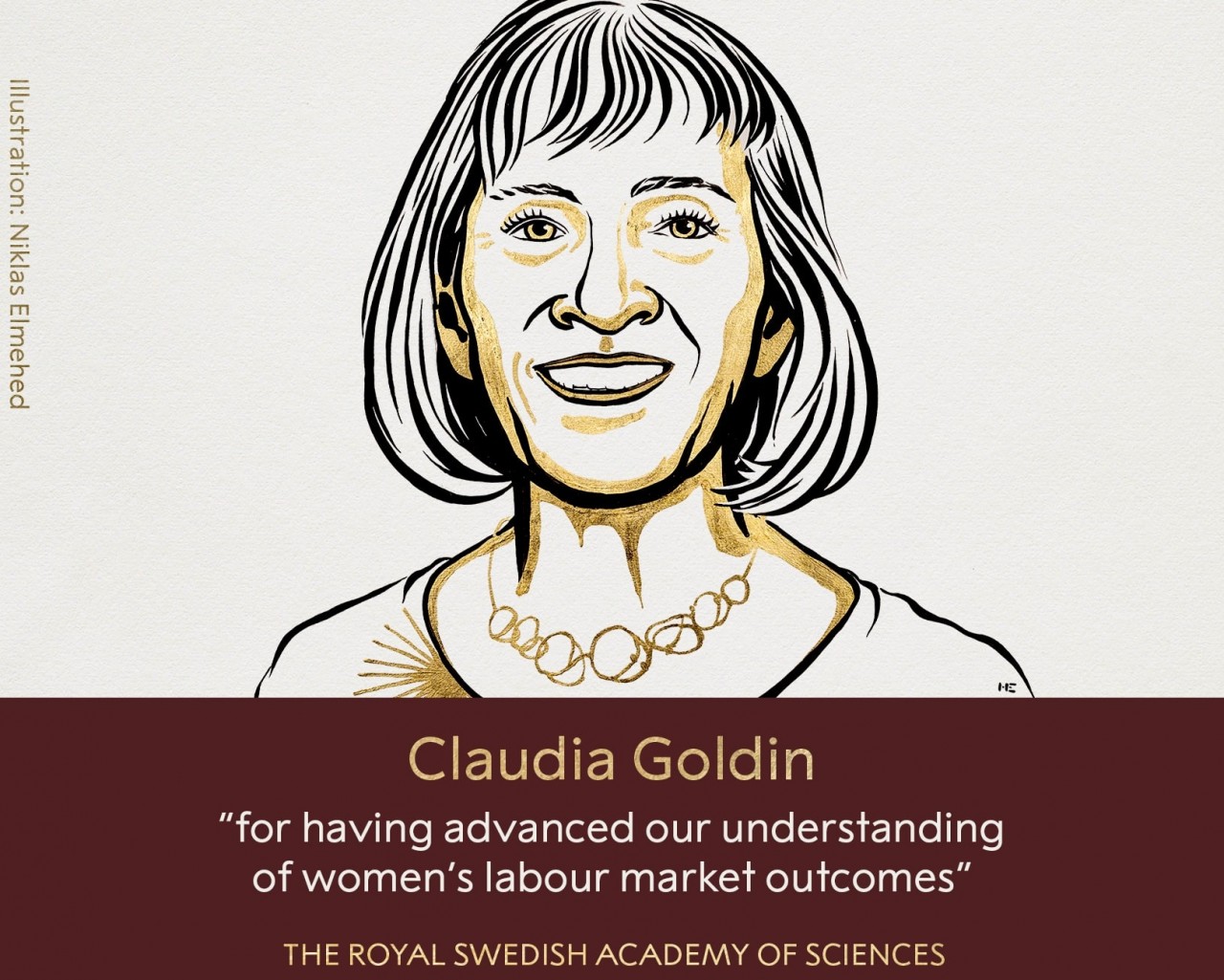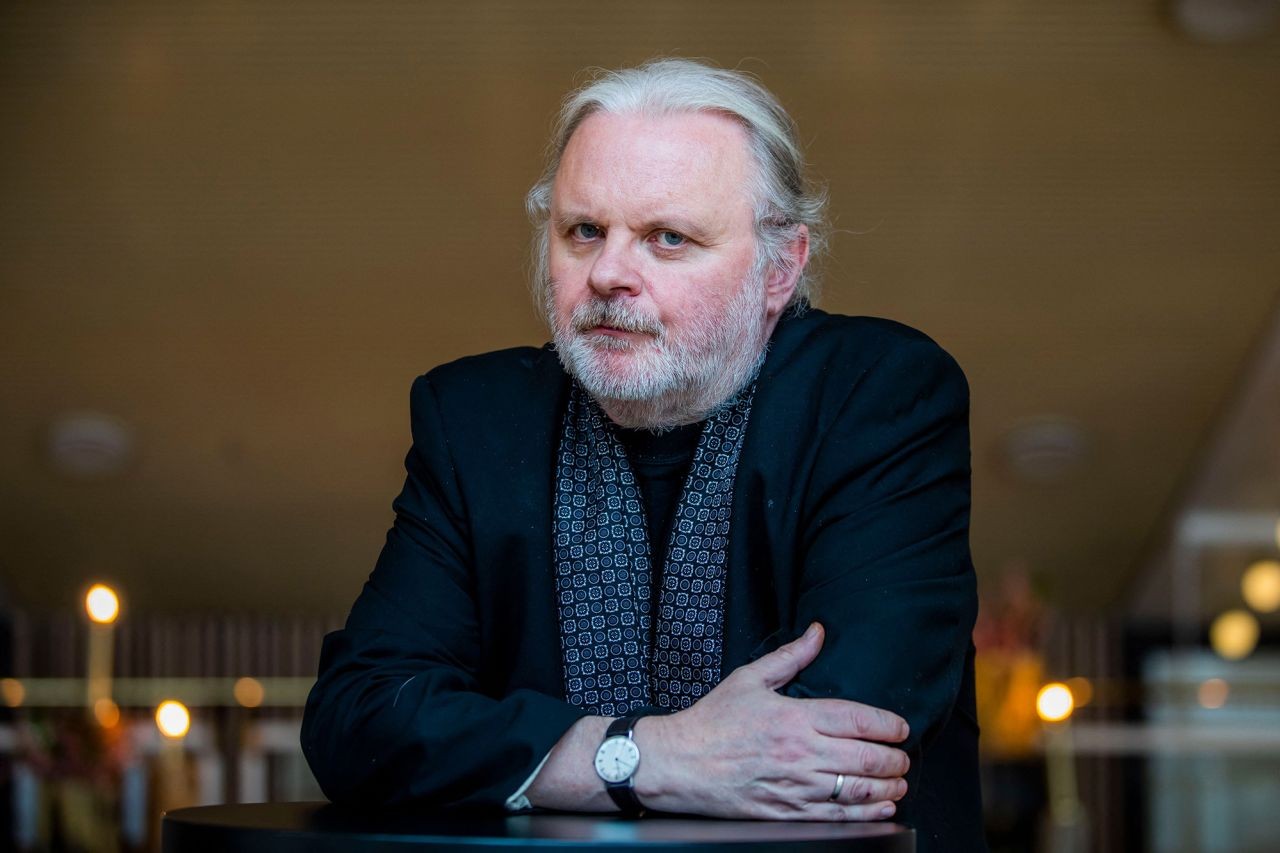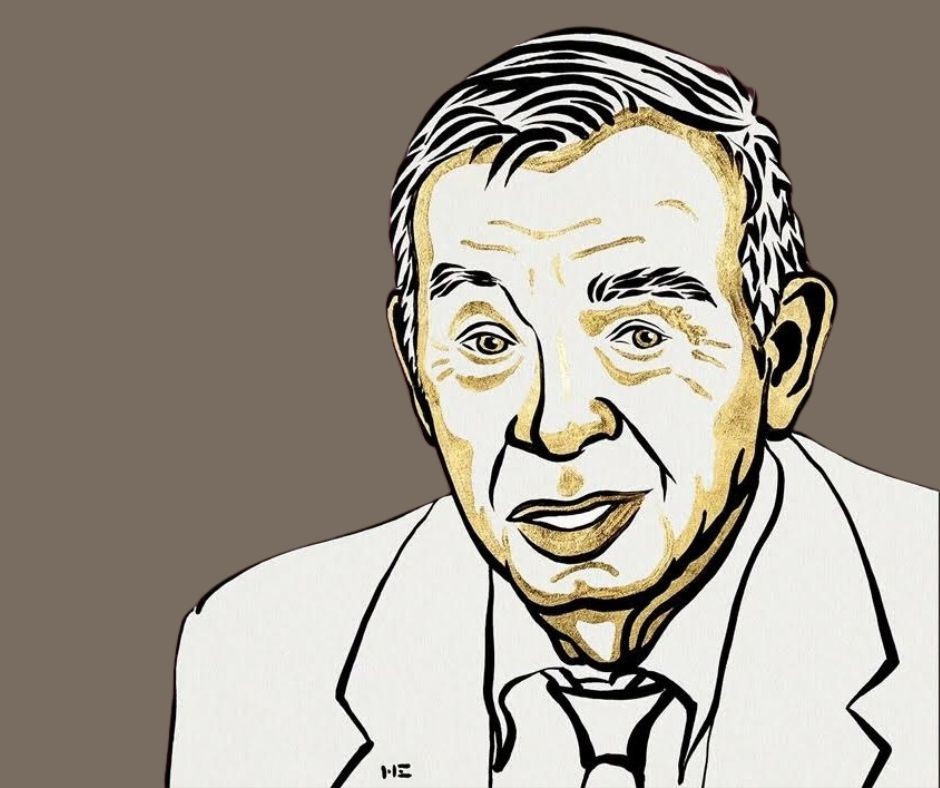2023 Nobel Prizes
Who is Anne L’Huillier - Fifth Woman Awarded Physics Nobel in 117 years?
Pierre Agostini of Ohio State University, Ferenc Krausz of Max Planck Institute of Quantum Optics, and Anne L’Huillier of Lund University will each receive equal shares of the 11m Swedish kronor (£823,000) prize. In particular, L’Huillier is only the fifth woman to receive the prize.
Speaking at the press conference, L’Huillier, who herself sat on the Nobel committee for physics between 2007 and 2015, said she was teaching when she received the call to tell her she had won.
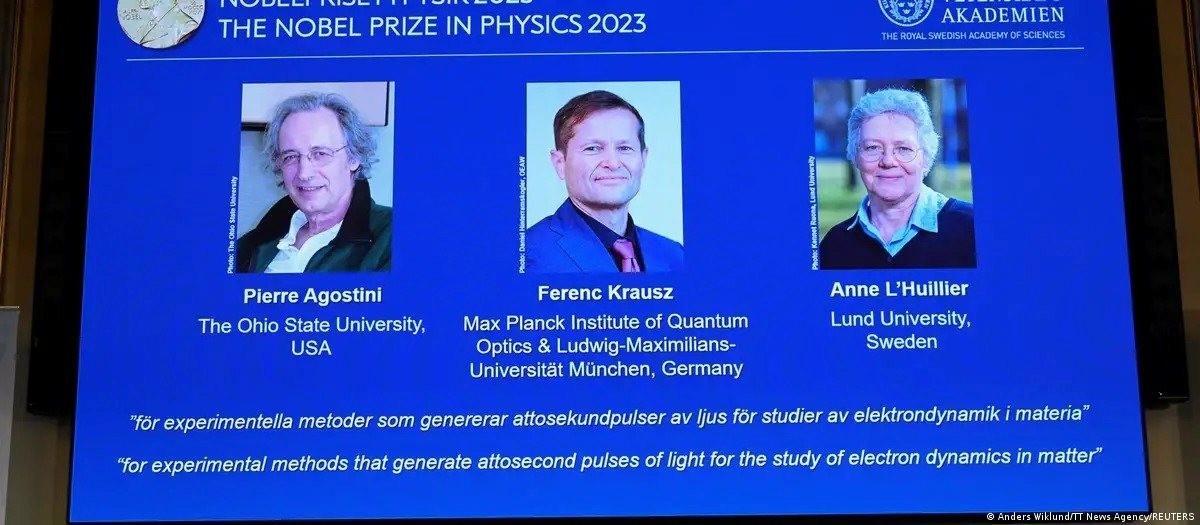 |
| Pierre Agostini, Ferenc Krausz, and Anne L’Huillier of Lund University receive equal shares of the 11m Swedish kronor (£823,000) prize. (Photo: REUTERS) |
“The last half-hour of my lecture was difficult to do. As you know there are not so many women that get this prize, so it is very, very special,” shared L’Huillier.
According to the Nobel Committee, Pierre Agostini, Ferenc Krausz, and Anne L’Huillier demonstrated a way to create extremely short pulses of light that can be used to measure the rapid processes in which electrons move or change energy. It praised the laureates for giving “humanity new tools for exploring the world of electrons inside atoms and molecules.”
Taking an electron snapshot
The three winners used precision lasers to generate ultra-short bursts of light. L’Huillier discovered a new effect from a laser light’s interaction with atoms in a gas. Agostini and Krausz then demonstrated that this effect can be used to create shorter pulses of light than were previously possible. Together, the trio’s experiments with lasers have allowed them to “capture the shortest of moments.
Just as the naked human eye cannot discern the individual beats of a hummingbird’s wing, until this breakthrough scientists were not able to observe or measure the individual movements of an electron, the committee explained. Rapid movements blur together, making extremely short events impossible to observe.
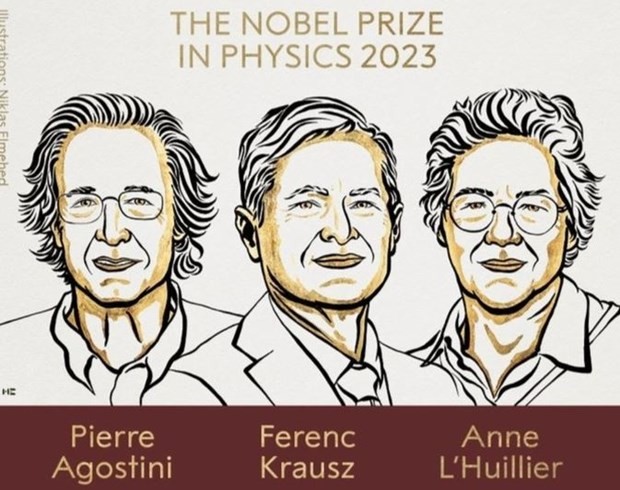 |
| Pierre Agostini, Ferenc Krausz and Anne L’Huillier have demonstrated a way to create extremely short pulses of light that can be used to measure the rapid processes in which electrons move or change energy. (Source: NobelPrize/X) |
“The faster the event, the faster the picture needs to be taken if it is to capture the instant. The same principle applies to trying to take a snapshot of the movements of electrons,” said the committee.
When asked about the potential applications of her research, L’Huillier said the first use is “to really understand when we look at electrons, and look at their properties.”
“The second one is much more practical and it’s coming. This radiation that we produce is also useful for the semiconductor industry as an imaging tool. So this is also coming with a practical application,” said L’Huillier.
Anne L’Huillier - one of the pioneers in attosecond science
Anne L’Huillier is the fifth woman in 117 years to have received the Physics Nobel. Only four women have won the Nobel Physics Prize since the award was first handed out in 1901: Marie Curie (1903), Maria Goeppert Mayer (1963), Donna Strickland (2018), and Andrea Ghez (2020). She was one of the recipients of last year's prestigious Wolf Prize, whose laureates occasionally go on to win the Nobel.
L'Huillier is a French-Swedish physicist working on the interaction between short and intense laser fields with atoms. Born in Paris in 1958, she defended her thesis on multiple multiphoton ionization in 1986, at the Université Pierre et Marie Curie, Paris, and Commissariat à l’Energie Atomique (CEA).
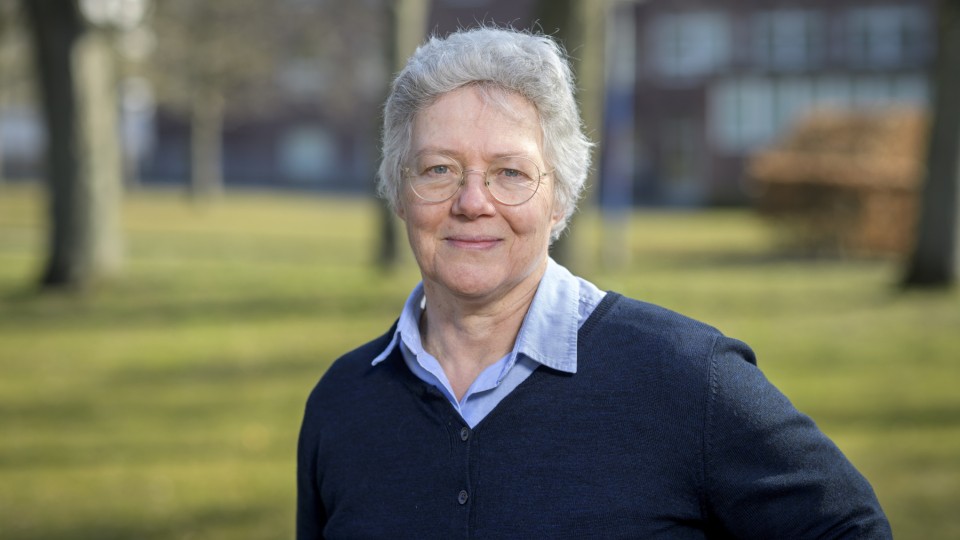 |
| Anne L’Huillier. (Photo: Lund University) |
In 1987, Anne L’Huillier discovered that many different overtones of light arose when she transmitted infrared laser light through a noble gas. Each overtone is a light wave with a given number of cycles for each cycle in the laser light. They are caused by the laser light interacting with atoms in the gas; it gives some electrons extra energy that is then emitted as light. She has continued to explore this phenomenon, laying the ground for subsequent breakthroughs.
L’Huillier's discovery laid grounds for subsequent breakthroughs. In 2001, Pierre Agostini succeeded in producing and investigating a series of consecutive light pulses, in which each pulse lasted just 250 attoseconds. At the same time, Ferenc Krausz was working with another type of experiment, one that made it possible to isolate a single light pulse that lasted 650 attoseconds.
In 2011, L’Huillier received the L'Oréal-Unesco Prize for Women and Science for her work on the development of an extremely fast camera that could record the movements of electrons in an attosecond.
| Nobel Prize in Physics in Number 116 Nobel Prizes in Physics have been awarded since 1901. 47 physical prizes are awarded to only one winner. 5 women have won the Nobel Physics Prize since the award was first handed out in 1901: Marie Curie (1903), Maria Goeppert Mayer (1963), Donna Strickland (2018), Andrea Ghez (2020), and Anne L’Huillier (2023). 25 years old: the age of the youngest-ever Nobel Prize winner in Physics - Lawrence Bragg. 96 years old: the age of the oldest Nobel Prize winner in Physics - Arthur Ashkin. |
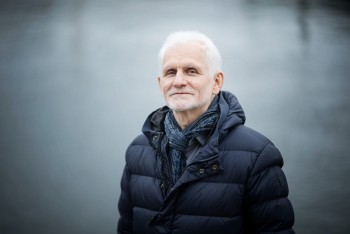 | Who Is Ales Bialiatski – The Winner Of Nobel Peace Prize In 2022? The Norwegian Nobel Committee has decided to award the Nobel Peace Prize for 2022 to one individual and two organizations. |
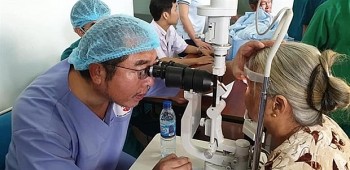 | Japanese Eye Doctor Earns “Nobel Prize of Asia” for 20-Year-Dedication in Vietnam A Japanese eye doctor has been recently awarded the “Asian Nobel Prize” for providing free treatment and training doctors in Vietnam. |
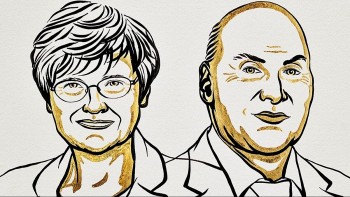 | Scientists Behind COVID Vaccine Win 2023 Nobel Prize in Medicine- Who Are They? The 2023 Nobel Prize in Physiology or Medicine has been awarded to Katalin Karikó and Drew Weissman for their contributions to RNA biology, which helped ... |
Recommended
 World
World
India strikes back at terrorists with Operation Sindoor
 World
World
India sending Holy Relics of Lord Buddha to Vietnam a special gesture, has generated tremendous spiritual faith: Kiren Rijiju
 World
World
Why the India-US Sonobuoy Co-Production Agreement Matters
 World
World
Vietnam’s 50-year Reunification Celebration Garners Argentine Press’s Attention
Popular article
 World
World
"Will continue offering our full support to Indian govt": US FBI Director after Pahalgam attack
 World
World
"Great Leader": JD Vance Lauds PM Modi During His India Visit
 World
World
Trump’s Tariff Pause: A Strategic Move from “The Art of the Deal”?
 World
World




